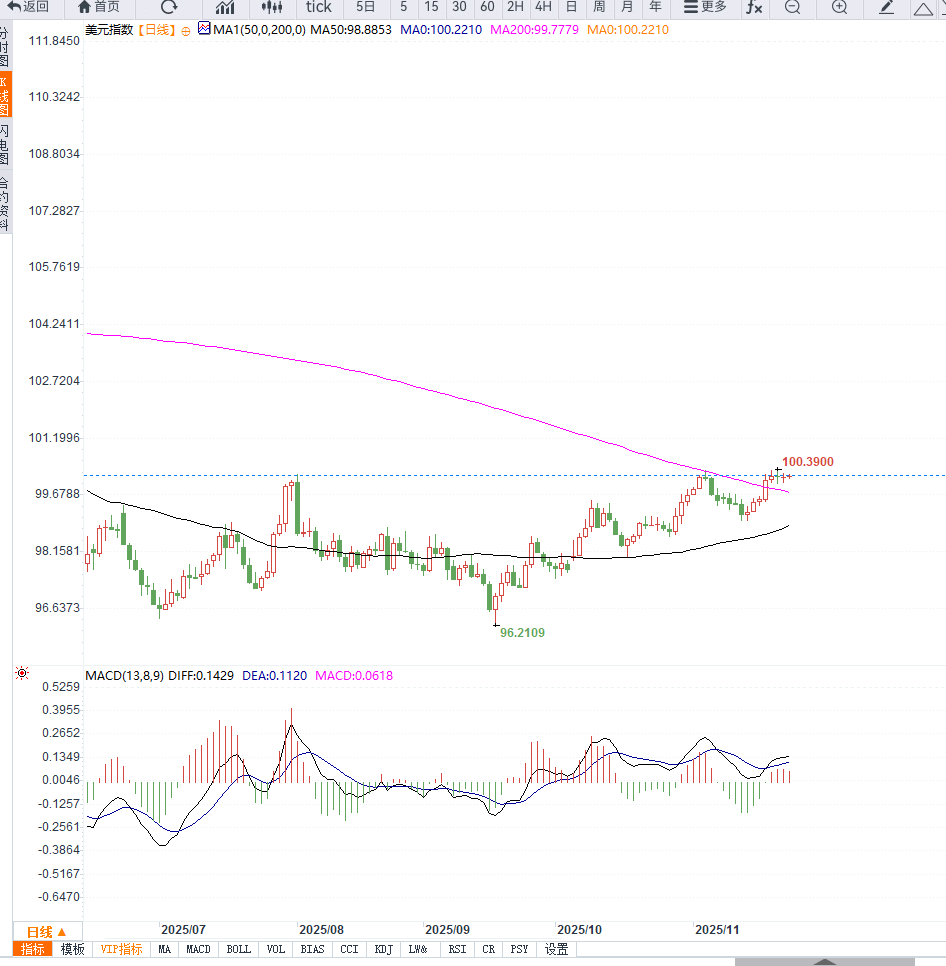The Federal Reserve's easing signals are putting pressure on the dollar, which is expected to remain range-bound in the short term, awaiting a directional move.
2025-11-25 13:54:31
Recent dovish comments from several Federal Reserve officials have become a key factor suppressing the dollar. Federal Reserve official Christopher Waller stated that the labor market remains weak enough to justify a 25-basis-point rate cut in December.
 San Francisco Fed President Mary Daly also pointed out that the recent "sudden deterioration" in the job market is far more difficult to manage than a resurgence of inflation, therefore she tends to support a rate cut in December.
San Francisco Fed President Mary Daly also pointed out that the recent "sudden deterioration" in the job market is far more difficult to manage than a resurgence of inflation, therefore she tends to support a rate cut in December.New York Federal Reserve President John Williams said last week that further rate cuts are "still possible in the near term" without impacting the inflation target. These remarks reinforced market expectations for further easing.
According to the CME FedWatch tool, the market's probability of a 25 basis point rate cut in December has risen to nearly 80%, significantly higher than last week's 30%. Against this backdrop, the US dollar index is under heavy pressure.
From the daily chart structure, the DXY continues its weak trend, with the bulls lacking effective stabilization signals. The index continues to trade below the short-term moving averages, indicating limited rebound strength; the MACD remains below the zero line, maintaining bearish momentum; the RSI hovers around 40, not yet entering extreme ranges but with a weak trend.
The key support level of 100.50-100.30 has been effectively broken recently, indicating that the overall trend has shifted back to bearish dominance. If the market continues to consolidate below this range, the index may further decline to 99.80 and 99.40.
Conversely, if US economic data significantly exceeds expectations, leading to a short-term improvement in dollar sentiment, the DXY index would need to regain a foothold above 100.60 to potentially repair some of its technical structure and then challenge the resistance zone of 101.20. Overall, the dollar index remains in a weak channel in the short term, with neither fundamentals nor technical indicators providing reversal signals.

Editor's Note:
From the current perspective, the weakness of the US dollar index is not solely driven by speeches from Federal Reserve officials, but rather by structural fatigue emerging in overall US data. A slowing job market and weakening inflation momentum suggest that expectations for interest rate cuts will continue.
For the DXY to truly reverse, two conditions are needed: US data must comprehensively exceed expectations; and market expectations regarding the Fed's interest rate cut trajectory must reverse. Otherwise, the dollar index will most likely remain weak and volatile.
- Risk Warning and Disclaimer
- The market involves risk, and trading may not be suitable for all investors. This article is for reference only and does not constitute personal investment advice, nor does it take into account certain users’ specific investment objectives, financial situation, or other needs. Any investment decisions made based on this information are at your own risk.





















